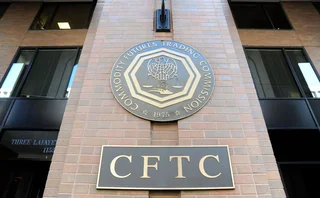
New double-counting methodology responsible for greater-than-expected rise in credit derivatives
The International Swaps and Derivatives Association’s mid-year survey of the over-the-counter derivatives market showed a substantial increase in credit derivatives notional volumes, growing from $918.9 billion at the end of 2001 to $1.6 trillion at mid-2002. But the figure this year was calculated according to a new adjustment rate to discount double counting, which eliminates trades between two counterparties being counted twice. This has put an excessively favourable sheen on the latest results, said Isda.
“Looking at the BIS survey, we drew the conclusion that the number of end-users were greater than the amount of dealers in the credit derivatives world. So, based on the BIS methodology, we raised our adjustment factor by 18%,” said Mengle. “Had we used the same adjustment factor for the previous survey, total credit derivative volumes would have been over $1 trillion at the end of last year,” he added.
According to Isda’s new methodology, credit derivatives volumes increased by 44% in the first six months of the year on a pro forma basis.
Interest rate and currency derivatives volumes also showed reasonable growth in the first half of the year, increasing by 19% to $82.7 trillion. Isda also surveyed the equity derivatives market for the first time. Total notional outstandings for equity derivatives stood at $2.3 trillion at mid-2002.
Isda’s mid-year derivatives survey is based on responses collated from around 80 of its member firms, including major derivatives houses, government entities and end-users.
Only users who have a paid subscription or are part of a corporate subscription are able to print or copy content.
To access these options, along with all other subscription benefits, please contact info@risk.net or view our subscription options here: http://subscriptions.risk.net/subscribe
You are currently unable to print this content. Please contact info@risk.net to find out more.
You are currently unable to copy this content. Please contact info@risk.net to find out more.
Copyright Infopro Digital Limited. All rights reserved.
As outlined in our terms and conditions, https://www.infopro-digital.com/terms-and-conditions/subscriptions/ (point 2.4), printing is limited to a single copy.
If you would like to purchase additional rights please email info@risk.net
Copyright Infopro Digital Limited. All rights reserved.
You may share this content using our article tools. As outlined in our terms and conditions, https://www.infopro-digital.com/terms-and-conditions/subscriptions/ (clause 2.4), an Authorised User may only make one copy of the materials for their own personal use. You must also comply with the restrictions in clause 2.5.
If you would like to purchase additional rights please email info@risk.net
More on Regulation
US Basel equivalence questioned as EU patience wears thin
MEPs say unfaithful US implementation of Basel III could trigger review of access to EU markets
The Term €STR transition: challenges and market readiness
The progress, challenges and factors shaping the adoption of Term €STR as financial institutions transition from Euribor
CFTC takes red pen to swaps rules, but don’t call it a rollback
Lawyers and ex-regs say agency is fine-tuning and clarifying regulations, not eliminating them
EU edges closer to calming FRTB fund-linked fray
Dealers say temporary solution is a step in the right direction but won’t fully resolve all issues
European Commission changes tune on proposed FRTB multiplier
Banks fear departure from original diversification factor undermines case for permanent relief
Supervisors should be mindful of geopolitical risks, says IMF
Shock events cause sizeable swings in asset pricing, institution’s latest report highlights
Bowman won’t commit to stress-testing the tariff shock
Nominated Fed vice-chair stonewalls calls to run ad hoc scenario similar to 2020 Covid test
Fed’s Bowman to ‘prioritise’ SLR exemption for US Treasuries
Reinstating Covid-era relief is a ‘no brainer’, dealers say, as bond markets reel from tariff chaos







